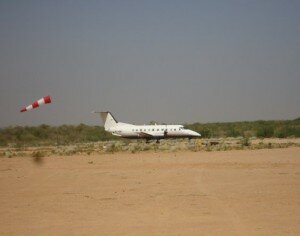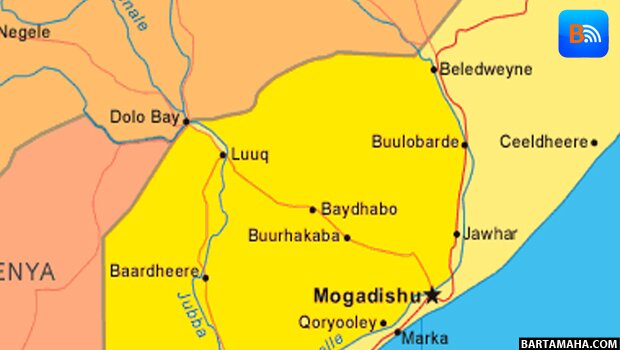Deaths of four Americans reflect increasing violence of Somali piracy
 Several years of circumnavigating the globe aboard their yacht, the Quest, had not dimmed Scott and Jean Adam’s enthusiasm for the world
Several years of circumnavigating the globe aboard their yacht, the Quest, had not dimmed Scott and Jean Adam’s enthusiasm for the world
Last month, the couple sailed from Thailand to Sri Lanka, and then on to India.
“We were so unhappy being dirt dwellers during our time in the states,” Jean Adam, a retired dentist, wrote on a blog she relied on to keep her family and friends up to date on her travels.
“Next stop: Salalah, Oman,” she added in early 2011.
But on their way to the small Arab kingdom of Oman last week, Somali pirates boarded the Adams’ sailing vessel, taking them and another couple aboard the boat hostage. By Tuesday, the four Americans, all experienced sailors, were dead.
Their deaths, at the hands of pirates who had ostensibly entered into negotiations with commanders aboard the nearby USS Sterett, reflected the increasingly violent ways of Somali pirates who have been pushing further out to sea in search of victims.
The U.S. Navy and its allies have tried to secure shipping lanes throughout the Horn of Africa and Arabian Sea, an area that is larger than the U.S. East Coast, but pirates have frequently been able to evade capture. Two years ago, a Navy crew was forced to launch a dramatic rescue in the same region, with snipers killing pirates holding the captain of the Maersk Alabama, a U.S. cargo vessel.
U.S. officials had hoped the latest crisis would end without violence, and had been negotiating for the Americans’ release with two pirates aboard the USS Sterett.
But early Tuesday, a rocket-propelled grenade was fired at the warship from the Adams’ 54-foot yacht, said Vice Adm. Mark I. Fox, the commander of the Navy’s 5th Fleet. A short time later, U.S. officials heard gunfire aboard the yacht and sent out Special Operations forces to board it.
“The intent always had been that this would be a negotiated process and not go to the point where we had gunfire,” Fox said.
When U.S. forces arrived on the yacht, several pirates moved up to the bow with their hands in the air in surrender. The Special Operations forces found the Adams and their two crew members – Phyllis Macay and Robert A. Riggle – shot and mortally wounded by the pirates, Fox said.
The Adams, of Marina del Rey, Calif., had been touring the world on their boat since 2002 and had collected thousands of Bibles that they passed out in their various ports of call. They appear to have been joined during their January stop in India by Macay and Riggle, who were both experienced sailors.
Riggle, a 67-year-old retired veterinarian, and Macay likely left their own smaller sailing vessel in India, said Hank Curci, who knew the two from a Seattle yacht club where they all were members. Riggle and Macay had been planning their own journey for about a year.
“They probably thought they weren’t in any danger,” Curci said.
Mariners had been warned not to pass through the area where the Quest was seized because of pirate activity, said Fox, the Navy admiral. But most of those attacks have been on large tankers.
The U.S. troops did not fire their weapons as they boarded the yacht, Fox said. After they began providing medical aid to the mortally wounded Americans, troops moved below deck to search for the remaining pirates.
A member of a U.S. Special Operations force killed one of the pirates with a knife, Fox said. A second pirate was also killed, and the bodies of two other pirates were discovered on board, bringing to 19 the total number of pirates involved.
The pirates appear to have been dispatched from a mother ship that ferried them out to sea and allowed them to get close to the Quest, Fox said.
Although a coalition of U.S. vessels and ships from other nations have largely been able to stop piracy in the area off the Gulf of Aden, which is closer to Somalia, the pirates have pressed farther out to sea in search of targets.
“The scope of the distances that are involved [is] about 1,300 nautical miles,” Fox said. “It is a vast, vast area. There are lots of places where we are not.”
U.S. forces had confirmed the hijacking Friday off the coast of Oman and monitored the yacht closely as it moved southwest in the following days headed for the Somali coast. Four Navy warships – the aircraft carrier USS Enterprise , the guided-missile cruiser USS Leyte Gulf and the guided-missile destroyers USS Sterett and USS Bulkeley – were involved in the effort.
“It was clear that the pirates wanted to get the yacht to Somalia,” Fox said. “It was very clear that they wanted to to bring the hostages into Somali territorial waters, if nothing else.”
Staff researcher Julie Tate and staff writer Debbi Wilgoren contributed to this report.
Comments
comments
 Calendar
Calendar






































